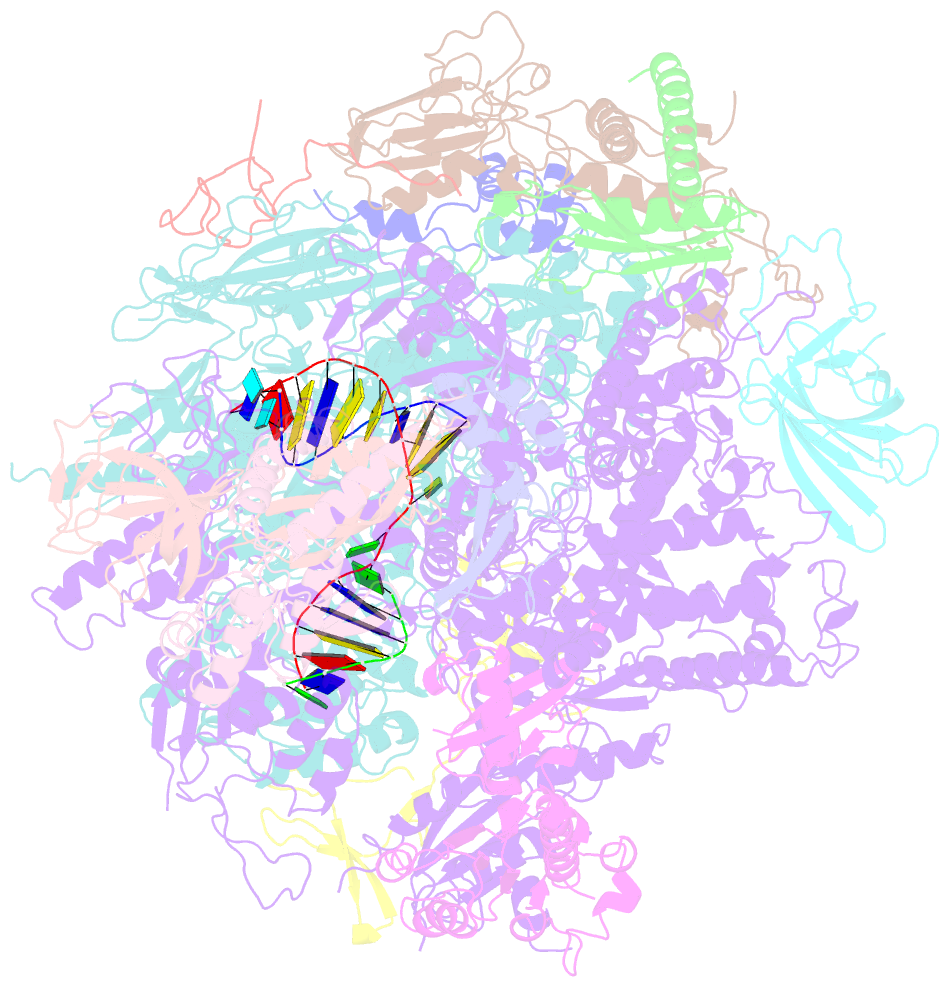Summary information and primary citation
- PDB-id
- 2r7z; SNAP-derived features in text and JSON formats;
DNAproDB
- Class
- transcription-DNA-RNA hybrid
- Method
- X-ray (3.8 Å)
- Summary
- Cisplatin lesion containing RNA polymerase ii elongation complex
- Reference
- Damsma GE, Alt A, Brueckner F, Carell T, Cramer P (2007): "Mechanism of transcriptional stalling at cisplatin-damaged DNA." Nat.Struct.Mol.Biol., 14, 1127-1133. doi: 10.1038/nsmb1314.
- Abstract
- The anticancer drug cisplatin forms 1,2-d(GpG) DNA intrastrand cross-links (cisplatin lesions) that stall RNA polymerase II (Pol II) and trigger transcription-coupled DNA repair. Here we present a structure-function analysis of Pol II stalling at a cisplatin lesion in the DNA template. Pol II stalling results from a translocation barrier that prevents delivery of the lesion to the active site. AMP misincorporation occurs at the barrier and also at an abasic site, suggesting that it arises from nontemplated synthesis according to an 'A-rule' known for DNA polymerases. Pol II can bypass a cisplatin lesion that is artificially placed beyond the translocation barrier, even in the presence of a G.A mismatch. Thus, the barrier prevents transcriptional mutagenesis. The stalling mechanism differs from that of Pol II stalling at a photolesion, which involves delivery of the lesion to the active site and lesion-templated misincorporation that blocks transcription.





